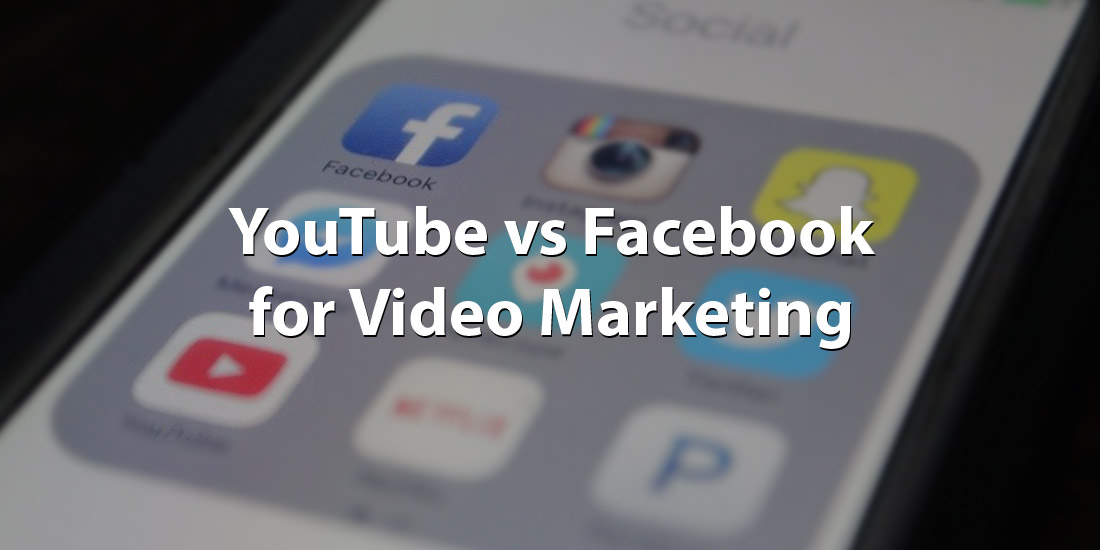How does YouTube compare with Facebook for video marketing? In the age of social media, small businesses face the dilemma of where to direct their energy for a social media presence or for any form of advertising. Video is one of the most impactful forms of content for your company’s search engine ranking. YouTube and Facebook are two of the biggest giants in B2B video marketing, so knowing where and how to direct your energy will be beneficial for your overall marketing strategy.
Contents
What Equipment Do You Need?
What is the necessary equipment for any kind of video marketing? You don’t need much! A reliable internet connection is essential. Otherwise, simple lighting, audio or video equipment will go a long way. A basic microphone can be helpful for background noise.
Facebook vs. YouTube for Videos
Many people can use YouTube well and Facebook well, but it’s a lot harder to make videos that do well on each platform. People often replace YouTube with TV or for how-to videos while Facebook videos run the risk of interrupting a user’s feed. Anytime you create a video, you must determine how this video is being watched and the circumstances others may watch it in. Once you’ve determined how people watch, select your platform, and make this the base for all your videos.
One benefit to Facebook videos is that they are easier to share initially, while YouTube videos get more views in the long term. Each platform has different parameters for what they could as “views”. Facebook count a view as 3 seconds or more of watch time while YouTube requires a 30 second watch time to count as a view.
Both YouTube and Facebook use live streaming. For vlogging, either Facebook or YouTube will work. A smoother way to do it is to complete it on Facebook live, and then upload it later to YouTube. To market successfully on YouTube, you must create the content your customers want and optimize for the YouTube algorithm, just like you would for SEO. This means researching your competition, optimizing images, using keywords, and conducting keyword research, responding to comments to promote engagement.
Facebook’s Use of User Engagement
Facebook tends to push exposure using engagement. As you post videos on Facebook, the more people who share, comment, and like, the more who will see the video in their feed. This visibility grows as more share your video with others thus continuing the cycle. However, all of this depends on if this video receives immediate engagement. If no engagement happens with users, a video can plateau and receive no viewership. Try build Facebook engagement in videos through subtitles. Subtitles are great because many people don’t use audio or choose to leave their audio off, so you can continue to reach users with subtitles.
Should I upload my video to Facebook or YouTube?
Both! Facebook should not be the only place you focus your marketing efforts because once a video is made, it takes little effort to place it on YouTube or other platforms. Since Facebook’s beginnings, it is never wise to place all your efforts or faith in one location. However, Facebook can be great to help you determine your style and what methods work best for your business. Then you can move to YouTube Live, Periscope, or another platform for live video.
If you are getting started on YouTube one of the easiest things you can do to get more subscribers to create an auto subscribe link. You can use this link to get your audience to automatically subscribe to your YouTube channel in video descriptions, emails, social media, website, and blogs. It’s easy and immediately prompts your audience to subscribe to your channel.
Social media engagement is a crucial piece of the puzzle. When posting short form videos, you should be able to articulate why your business is valuable and what your followers can gain by interacting with your video on social media.
Short videos are best on social media. In general aim for 2-3 minutes on Facebook and Twitter. For Instagram, aim for less than 1 minute, though upper limit of 15 seconds is a good length. YouTube videos give you a bit more length to play with. Videos that are 3–5-minutes are still great for your SEO, though 10 minutes is a good upper limit. This also allows you to insert ads or monetize the video if you wish. For short videos, Instagram stories is a great option. Also consider TikTok, a short form video platform that is a great promotional tool for businesses.
Short form videos are the new blogging. They have a similar style, energy, and concept as blogs. Still, blogging and video content should stay separate. They’re two helpful prongs on a multi-part plan to help your SEO.
Conclusion
Facebook and YouTube are the two biggest platforms to pay attention to when it comes to video marketing. Facebook is great for engagement purposes and YouTube serving as a direct contributor for boosting your SEO.


